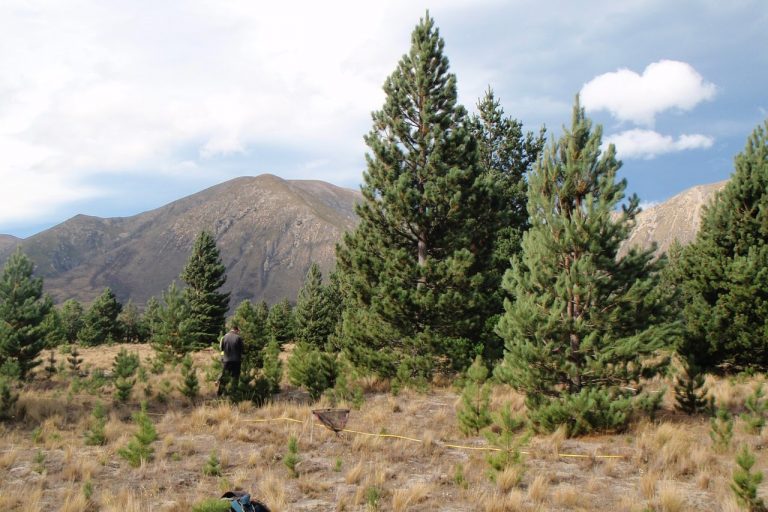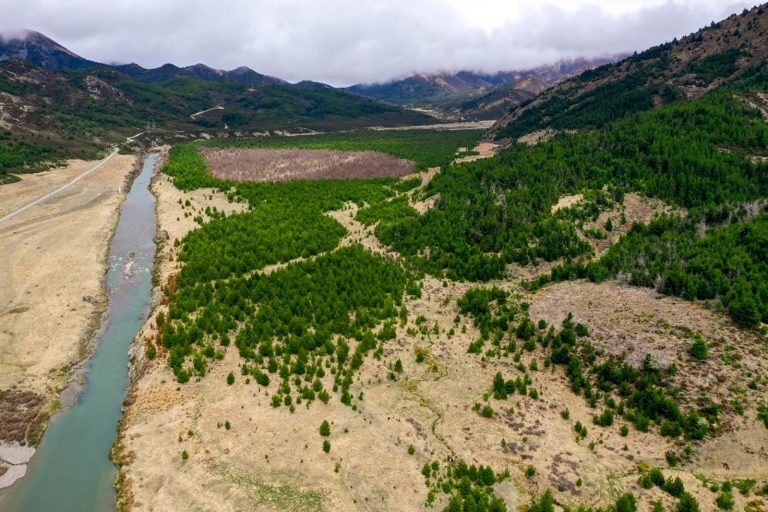View: Source
NEXUS
If it’s not one thing, its another
Contributing Editor – Philip R. Walsh
Concerns raised by the article below are an example of why it is important to recognize that we need to carefully assess the various solutions to dealing with CO2 emissions and its effect on climate change. According to the U.S. Global Change Research Program, data from the NOAA Earth System Research Laboratory has shown that the global monthly average atmospheric CO2 concentration rate has increased from approximately 340 parts per million (ppm) in 1980 to 410 ppm in 2019. To put that in perspective, the Center for Disease Control (CDC) has indicated that the maximum permissible exposure level in an occupational health and safety environment is 5,000 ppm and at levels exceeding 50,000 ppm there is an immediate danger to life. So no need to panic yet (unless the other impacts associated with climate change are already upon you). In the article, a study published in Frontiers in Ecology and the Environment, a well-respected academic journal within the Ecology field, the authors caution against aggressively promoting the planting of trees as a means to sequester carbon. Trees are known absorbers of CO2 as part of their growth process and in doing so the tree releases the oxygen and retains the carbon. A separate study of the carbon life cycle of a red maple determined that, after considering the carbon footprint associated with physically planting the tree to begin with, the net sequestered carbon was approximately 1 metric ton over a 60-year period. What is not considered are the factors that this article raises regarding the need to fully assess the type of trees to be planted and the local environment in which they are being planted. Failing to do so can lead to no effective carbon sequestration at all.
But let’s also consider the big picture. In 2019, according to the U.S. Environmental Protection Agency, the total amount of CO2 emitted in the U.S. was approximately 4,615 million metric tons of CO2 after accounting for natural sequestration from the land. That equates to 1,247 million metric tons of Carbon (3.7 to 1 CO2 to C ratio). That also means that to capture one year’s amount of carbon by planting red maples, we would require 1.25 billion trees to be planted and 60 years of time to wait until we have sequestered this one year of emissions.
So what is the solution? Planting more trees remains one part of the solution but as the article suggests, we must avoid the pitfalls. One way to do that is to follow certain global guidelines such as only using native trees, and if one has to introduce non-native trees then design and adopt custom practices for site selection and forest management that encourages awareness of the risks and the ability to early detect and respond to those risks. Of course trees are not the only natural solution, advances in the growth of macroalgae such as kelp have led to testing the ability to grow kelp in offshore locations that will capture carbon and then sink to great depths where it can remain sequestered for millions of years. Having said that, current estimates suggest that existing macroalgae is absorbing 173 million metric tons of carbon per year globally, so given total annual global emissions of CO2 are exceeding 36,000 million metric tons it is little wonder our atmospheric concentration continues to rise, emphasizing even further that a variety of solutions are required.
- Invasive trees may capture less carbon than the treeless ecosystem they overrun due to soil disturbance, increased risk of fires, and changes in light absorption, a recent review paper shows.
- These results have implications for policies and initiatives, particularly in places where carbon credits have been used to discourage the removal of invasive, non-native trees.
- Land managers need to consider much more than aboveground carbon, according to the paper’s authors, who say that, “Trees are not always the answer.”
Trees are a logical solution to climate change, but allowing or encouraging trees to spread into areas where they don’t typically grow, such as tundra and grasslands, can actually do more harm than good.
A recently published review paper in the journal Frontiers in Ecology and the Environment asks the question: “Should tree invasions be used in treeless ecosystems to mitigate climate change?”
The short answer: not usually.
Invasive trees may capture less carbon than the treeless ecosystem they overrun due to soil disturbance, increased risk of fires, and changes in light absorption.
These results have implications for policies and initiatives. In New Zealand, for example, carbon credits have been used to discourage the removal of invasive, non-native trees. These credits essentially allow businesses to emit greenhouse gases in exchange for the carbon taken up by the invasive trees.
Lodgepole pine (Pinus contorta) and Austrian pine (Pinus nigra) invading native grasslands in the Southern Alps of New Zealand. Photo credit: Martín Núñez / Mongabay
Likewise, the Paris Agreement, Bonn Challenge, and Trillion Trees Initiative all promote tree planting under the logic that trees remove carbon from the atmosphere and lock it in their biomass as they grow.
While this is true, scientists now know that when it comes to carbon accounting, calculating the balance is not so simple.
Globally, more carbon is stored in soil than in all of the Earth’s plants and the atmosphere combined. In some cases, when trees invade, they disrupt the soil, releasing more carbon from below the ground than they can capture and store above it.
A 2020 study found that in the Scottish moorlands, experimental areas planted with trees stored less carbon after several decades than untouched plots covered in native heather.
“It was counterintuitive that in some cases, planting trees can have the opposite effect to what we’ve been taught in school and actually lead to a loss of carbon from the ecosystem rather than sequestering it,” Nina Friggens, lead author of the 2020 study and current postdoctoral fellow at the University of Exeter, told Mongabay in a 2020 interview.
“We’re not trying to say that tree planting doesn’t work,” Friggens said. “[B]ut in terms of trees for carbon, we need to be careful where and what we plant.”
Non-native trees can also make a landscape more susceptible to fire by bringing biomass (and carbon) aboveground, where it can burn more easily.
In Florida, the invasion of broad‐leaved paperbark trees (Melaleuca quinquenervia) into wetlands has made fires more intense. Likewise, in the Patagonian steppe of South America, invasions of pine trees have added more fuel and connectivity to fires, ramping up their severity.
“This type of [invasive] forest has greater biomass than native forests, i.e., more combustible material, and can be highly flammable, thus increasing the frequency and intensity of fires. This problem entails important costs for human welfare, and generates problems for carbon storage,” Anibal Pauchard, a co-author of the 2021 review paper, said in a press release.
And as climate change worsens, forest permanence, the idea that forests will persist for decades or centuries, is threatened by increasing fires.
“Current risks are not carefully considered and accounted for, much less these increased risks that forests are going to face in a warming climate,” William Anderegg, a biologist at the University of Utah, told Mongabay.
Pines invading a native grassland in New Zealand. Photo credit: ABradley White for Manaaki Whenua Landcare Research / Mongabay
Increased forest cover in cold and temperate regions can also cause net warming by altering albedo, the amount of sunlight and radiation reflected from the Earth’s surface. Across the high latitudes in Canada or Russia, for instance, the reflective nature of the snow cools the planet. So having trees in these areas covers the snow, making the land darker and thus warmer.
There are a few ways that trees end up in formerly treeless areas. Trees can be planted there (afforestation), native trees may spread there naturally (woody encroachment), or non-native trees invade and are often fast-growing (tree invasion). There is evidence that in all three of these cases, trees can do more harm than good for the local carbon budget and also for the ecosystem as a whole.
“Professionals and decision makers may think that maintaining or even promoting the invasion of these non-native trees and replacing other natural ecosystems may be a way to combat climate change,” said Martín Núñez, lead author of the 2021 review paper and professor at the National University of Comahue, Argentina, and the University of Houston. “But unfortunately, that vision is partial and must incorporate all these negative effects.”
The effects of tree invasions on fire, albedo, soil carbon, as well as native species will differ from place to place. In some cases, it makes sense to leave these trees in place, such as when removing them would be prohibitively expensive, do long-term damage to the soil, or when the trees can be managed and kept from spreading.
“When making decisions regarding management of tree invasions, it’s important to consider impacts beyond just carbon storage, including the negative impacts of tree invasions on biodiversity and on human communities, through reduction of streamflow and increased fire risk,” Kimberley Davis, a co-author of the 2021 review from the University of Montana, said in a press release.
Or more simply, Núñez says, “Trees are not always the answer.”





